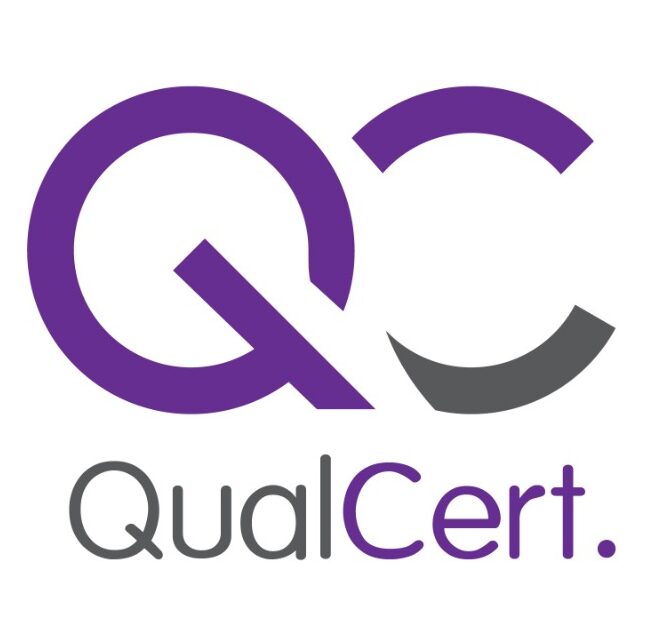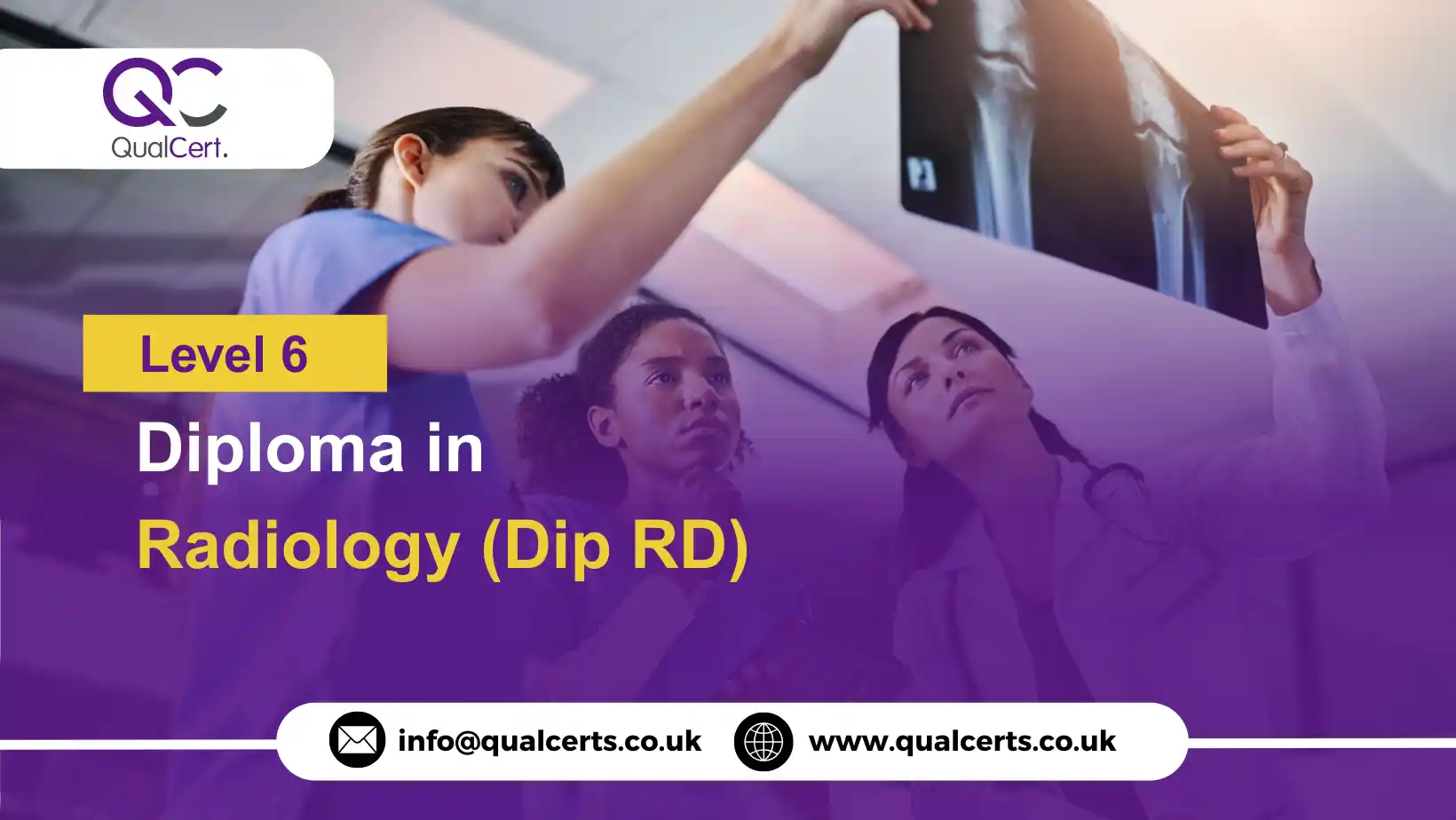The QualCert Level 6 Diploma in Radiology (Dip RD) is a specialist qualification designed for healthcare professionals seeking to advance their expertise in medical imaging and diagnostic radiology. This diploma provides learners with comprehensive knowledge of radiographic techniques, imaging technologies, radiation safety, and advanced diagnostic interpretation, enabling them to deliver high-quality patient care. It is specifically aimed at professionals who wish to enhance their career prospects, expand their clinical knowledge, and strengthen their Continuing Professional Development (CPD).
This qualification is not intended for fresh candidates. Learners enrolling in the Level 6 Diploma in Radiology are expected to have prior professional experience in healthcare or medical imaging, allowing them to apply advanced theoretical knowledge directly to clinical practice. The programme covers a wide range of topics, including advanced radiographic anatomy, imaging modalities, clinical assessment, patient management, and the latest developments in diagnostic radiology. Learners will develop critical thinking, analytical skills, and evidence-based decision-making abilities essential for effective radiological practice.
Centres delivering this diploma must adhere to rigorous standards to ensure high-quality teaching and assessment. They must have qualified and experienced staff with specialist knowledge in radiology, along with access to up-to-date imaging equipment, clinical resources, and learning materials. This ensures learners receive professional guidance and the necessary tools to achieve success.
The QualCert Level 6 Diploma in Radiology (Dip RD) empowers healthcare professionals to deepen their clinical expertise, refine practical skills, and gain recognition for their advanced capabilities, making it an essential step for career progression within the field of diagnostic imaging and radiology.
Course Contents of QualCert Level 6 Diploma in Radiology (Dip RD):
The QualCert Level 6 Diploma in Radiology (Dip RD) consists of a structured set of study units designed to provide learners with in-depth and comprehensive knowledge. The qualification includes a total of 1200 Total Qualification Time (TQT), 600 Guided Learning Hours (GLH), and awards 120 credits.
| Unit Ref# | Unit Title | Credits | GLH | TQT |
| QC27163- 1 | Advanced Radiographic Anatomy and Imaging Principles | 20 | 100 | 200 |
| QC27163-2 | Radiology Pathophysiology and Disease Mechanisms | 20 | 100 | 200 |
| QC27163-3 | Clinical Assessment and Diagnostic Imaging Techniques | 20 | 100 | 200 |
| QC27163-4 | Radiological Safety, Radiation Protection, and Quality Assurance | 20 | 100 | 200 |
| QC27163-5 | Interventional Radiology and Patient-Centred Imaging Care | 20 | 100 | 200 |
| QC27163-6 | Research, Evidence-Based Practice, and Professional Development in Radiology | 20 | 100 | 200 |
Entry Requirements for the QualCert Level 6 Diploma in Radiology (Dip RD):
- Minimum Age: Learners must be at least 21 years old at the time of registration.
- Educational Background: A recognised Level 5 qualification in radiography, healthcare, medical imaging, or a related field is required. Equivalent professional qualifications may also be considered.
- Professional Experience: This diploma is intended for experienced healthcare practitioners. Learners must have prior professional experience in medical imaging, radiography, or clinical healthcare settings to provide a foundation for advanced radiology study.
- Language Proficiency: As the programme is delivered in English, learners must demonstrate strong written and spoken English skills. Centres may require evidence of language proficiency to ensure effective participation.
- Commitment to CPD: Applicants should demonstrate a clear commitment to Continuing Professional Development (CPD) and career progression within radiology or diagnostic imaging.
- Access to Required Resources: Learners must have access to clinical imaging environments, diagnostic tools, research materials, and digital learning resources necessary to support advanced study and practical application.
These requirements ensure learners are well-prepared to engage with the Level 6 Diploma in Radiology, develop advanced skills, and achieve professional growth in diagnostic imaging.
Learning Outcomes for the QualCert Level 6 Diploma in Radiology (Dip RD):
Advanced Radiographic Anatomy and Imaging Principles
- Demonstrate comprehensive knowledge of human anatomy relevant to radiographic practice
- Apply imaging principles to produce high-quality diagnostic images
- Analyse anatomical structures and variations to support accurate interpretation
- Integrate anatomical knowledge into clinical radiology decision-making
Radiology Pathophysiology and Disease Mechanisms
- Explain the underlying mechanisms of common and complex radiological conditions
- Analyse the progression and impact of diseases on imaging findings
- Apply pathophysiological knowledge to inform diagnostic interpretation
- Evaluate the relationship between disease processes and imaging modalities
Clinical Assessment and Diagnostic Imaging Techniques
- Conduct advanced clinical assessments to determine appropriate imaging approaches
- Utilise various imaging modalities including X-ray, CT, MRI, and ultrasound effectively
- Interpret diagnostic images accurately to support clinical decision-making
- Integrate assessment and imaging findings into patient-centred care plans
Radiological Safety, Radiation Protection, and Quality Assurance
- Apply principles of radiation safety and protection for patients and staff
- Implement quality assurance procedures to maintain high imaging standards
- Monitor and reduce radiation exposure using best practice protocols
- Evaluate compliance with national and international radiology safety standards
Interventional Radiology and Patient-Centred Imaging Care
- Demonstrate knowledge of interventional radiology procedures and techniques
- Plan and deliver patient-centred imaging care effectively and safely
- Assess risks, benefits, and outcomes of interventional procedures
- Promote patient engagement and adherence to imaging protocols
Research, Evidence-Based Practice, and Professional Development in Radiology
- Critically appraise current research and integrate findings into radiology practice
- Conduct small-scale research projects or audits within clinical imaging settings
- Apply evidence-based approaches to enhance patient care and diagnostic accuracy
- Demonstrate commitment to lifelong learning and Continuing Professional Development (CPD)
The QualCert Level 6 Diploma in Radiology (Dip RD) is designed for experienced healthcare professionals seeking to advance their expertise in medical imaging and diagnostic radiology. This qualification is not suitable for fresh candidates and is aimed at practitioners with prior clinical or radiography experience who are committed to enhancing their knowledge, skills, and Continuing Professional Development (CPD).
This course is ideal for:
- Radiographers and diagnostic imaging professionals looking to specialise or deepen their expertise
- Medical doctors involved in diagnostic imaging and radiology interpretation
- Nurses and allied health professionals supporting imaging procedures and patient care
- Healthcare practitioners involved in radiation safety, interventional radiology, or imaging departments
- Professionals seeking to develop advanced skills in radiographic assessment, imaging techniques, and patient-centred care
Learners undertaking this diploma will already have a professional healthcare background and a commitment to applying advanced radiology knowledge to improve patient outcomes and strengthen their career prospects.
Centres wishing to deliver the QualCert Level 6 Diploma in Radiology (Dip RD) must demonstrate their ability to provide high-quality training, assessment, and learner support. To ensure learner success and maintain the integrity of the qualification, centres must meet the following requirements:
- Qualified Staff: Tutors and assessors must be suitably qualified, experienced, and competent in radiology, medical imaging, or related healthcare disciplines.
- Learning Resources: Centres must provide access to current and relevant learning materials, imaging guidelines, case studies, and digital resources to support advanced radiology study.
- Clinical Facilities: Learners must have access to appropriate imaging environments, diagnostic tools, and radiology equipment for practical application.
- Assessment and Quality Assurance: Robust internal assessment systems and quality assurance procedures must be in place to ensure reliability, consistency, and fairness in learner evaluation.
- Learner Support: Centres must provide guidance, mentoring, and academic support to ensure learners can achieve their full potential.
- Compliance: All delivery and assessment practices must adhere to QualCert’s quality assurance policies and the standards required for Level 6 qualifications.
These requirements ensure learners receive a structured, professional, and supportive learning environment, enabling them to develop advanced radiology skills, knowledge, and competencies for career progression.

